Where & HOW To See The Northern Lights in Banff
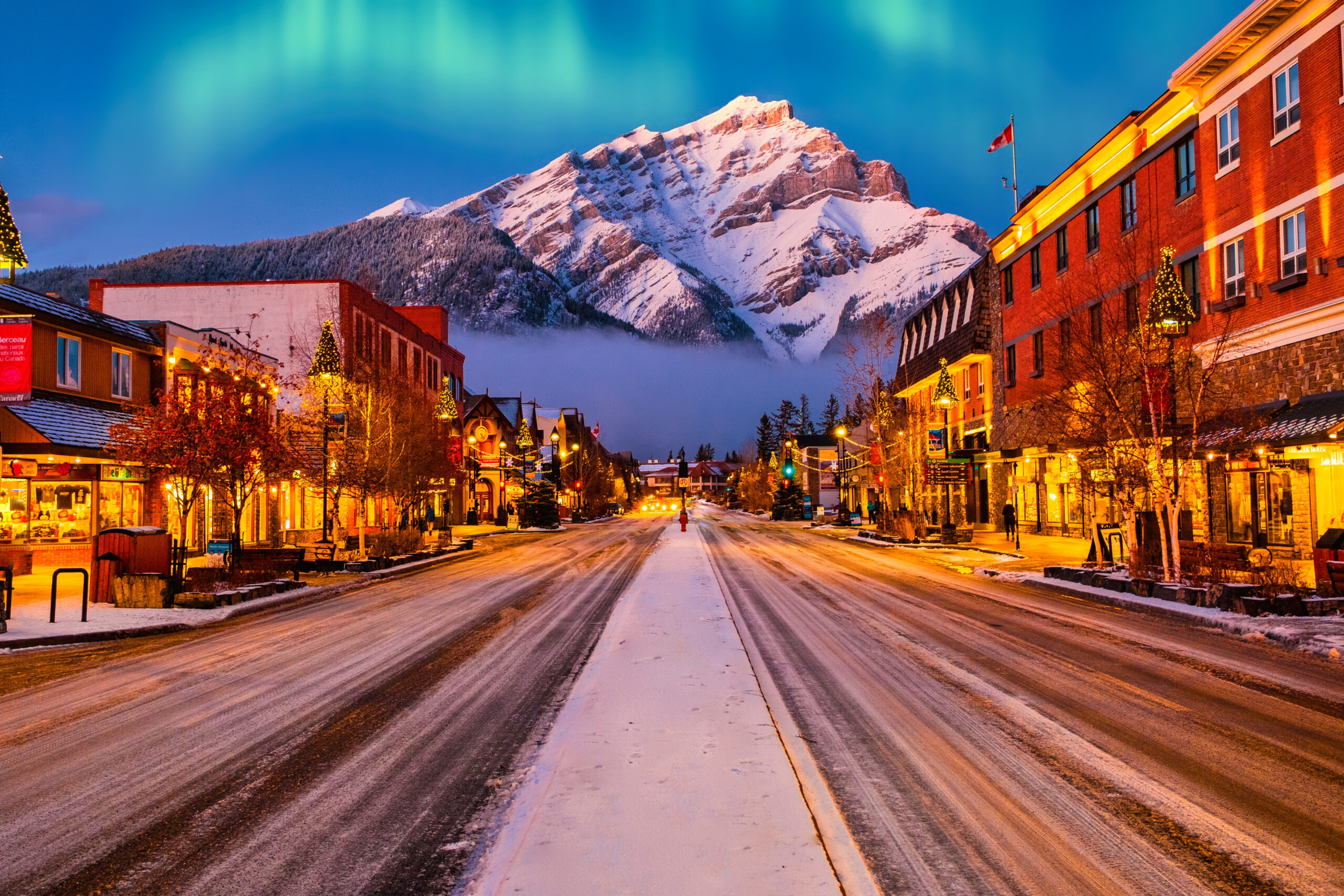
Yes, you can see the northern lights in Banff. The Aurora Borealis make an appearance several times throughout the year. Visitors have the best chance to spot the lights during the winter months from October to May. However, thanks to little light pollution and crisp mountain air, it is possible to see them during the summer months.
Witnessing the Aurora Borealis is always an extraordinary experience, and only more so over the craggy peaks of the Canadian Rockies. We’ve witnessed the northern lights in several dream-worthy destinations like Iceland, Alaska, Norway, and the Yukon.
However, we were a bit surprised when we first learned you could catch the Aurora Borealis in the Canadian Rockies. With patience and an eye on the aurora forecast, and a little bit of luck you can also spot the Northern Lights in Banff. Personally, we see them once or twice a year here, and it’s always a special experience.
How To See The Northern Lights in Banff
The Dark Skies of the Canadian Rockies
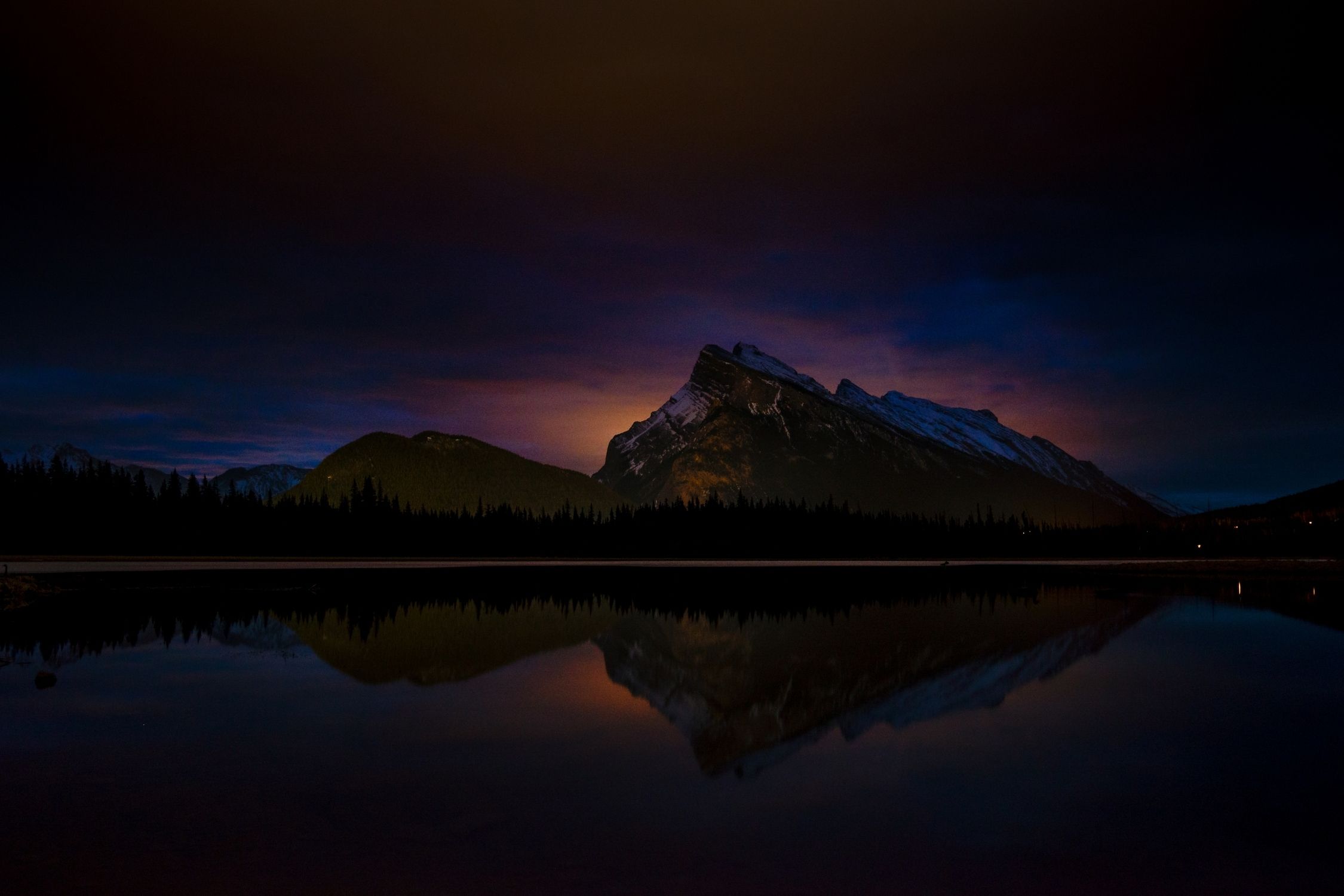
Alberta happens to be home to some of the world’s largest dark sky preserves with Wood Buffalo and Jasper National Park. This means there are strict laws and regulations to minimize any form of light pollution. It ensures amazing night sky viewing experiences even if you aren’t lucky enough to spot the northern lights.
As locals, we’re spoiled by the night skies and often forget that most don’t enjoy a sky littered with more stars than we could ever hope to count. It doesn’t matter if the northern lights appear, as it’s still wonderful observing the night sky on a clear night.
When Can You See the Northern Lights in Banff?
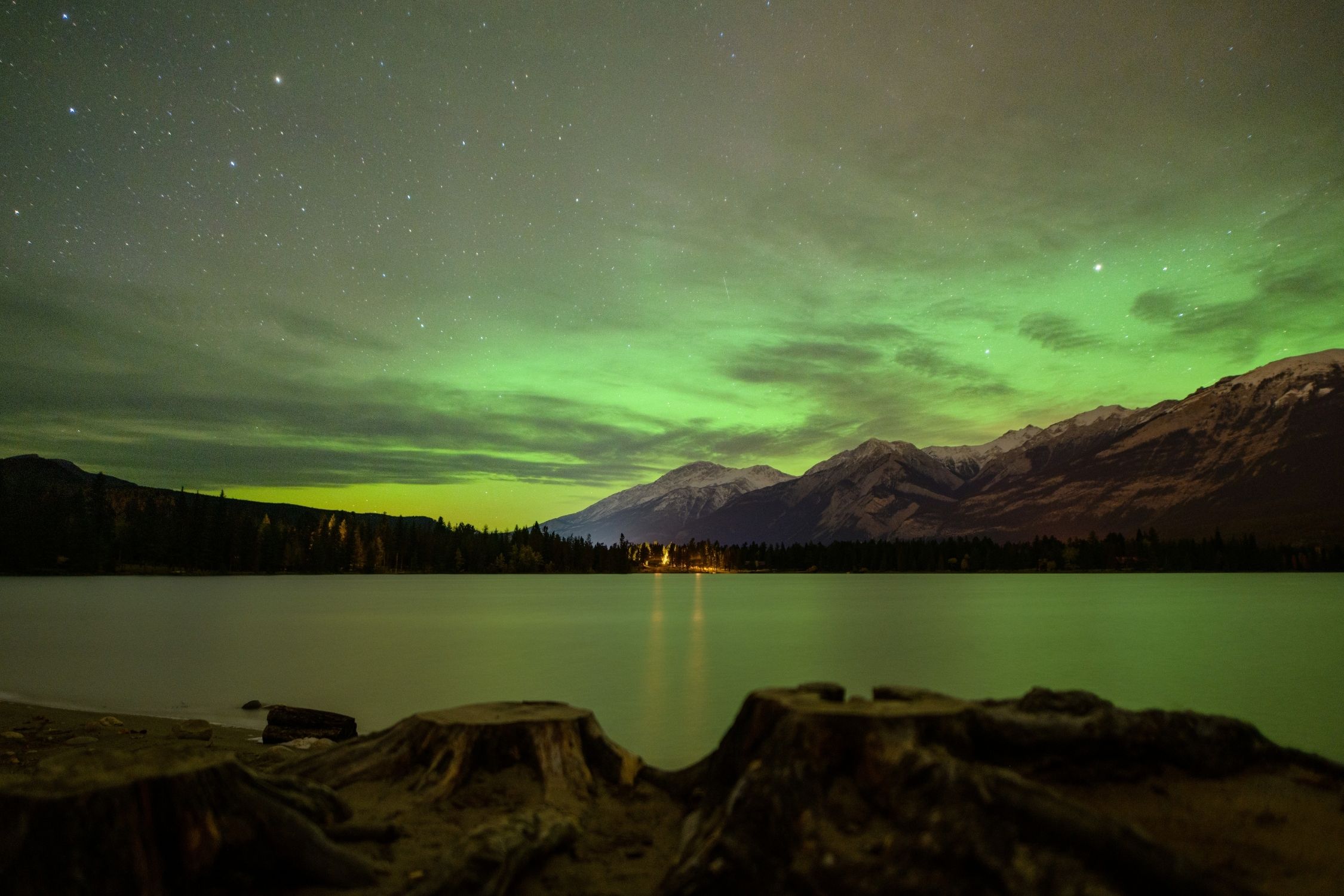
It’s impossible to predict exactly what day the aurora borealis will appear. The aurora borealis can shine at any time of year, but they are best from October to mid-April, when the night sky is darkest. Generally, the northern lights in Banff shine their brightest during the winter months of December to February. We personally have seen the northern lights here in December, February, and even in early May!
Your best chance to see them is on clear nights with a new moon. Keep in mind they are geomagnetic activity and have their own set of circumstances; just because it’s a clear night does not mean the northern lights are visible or active.
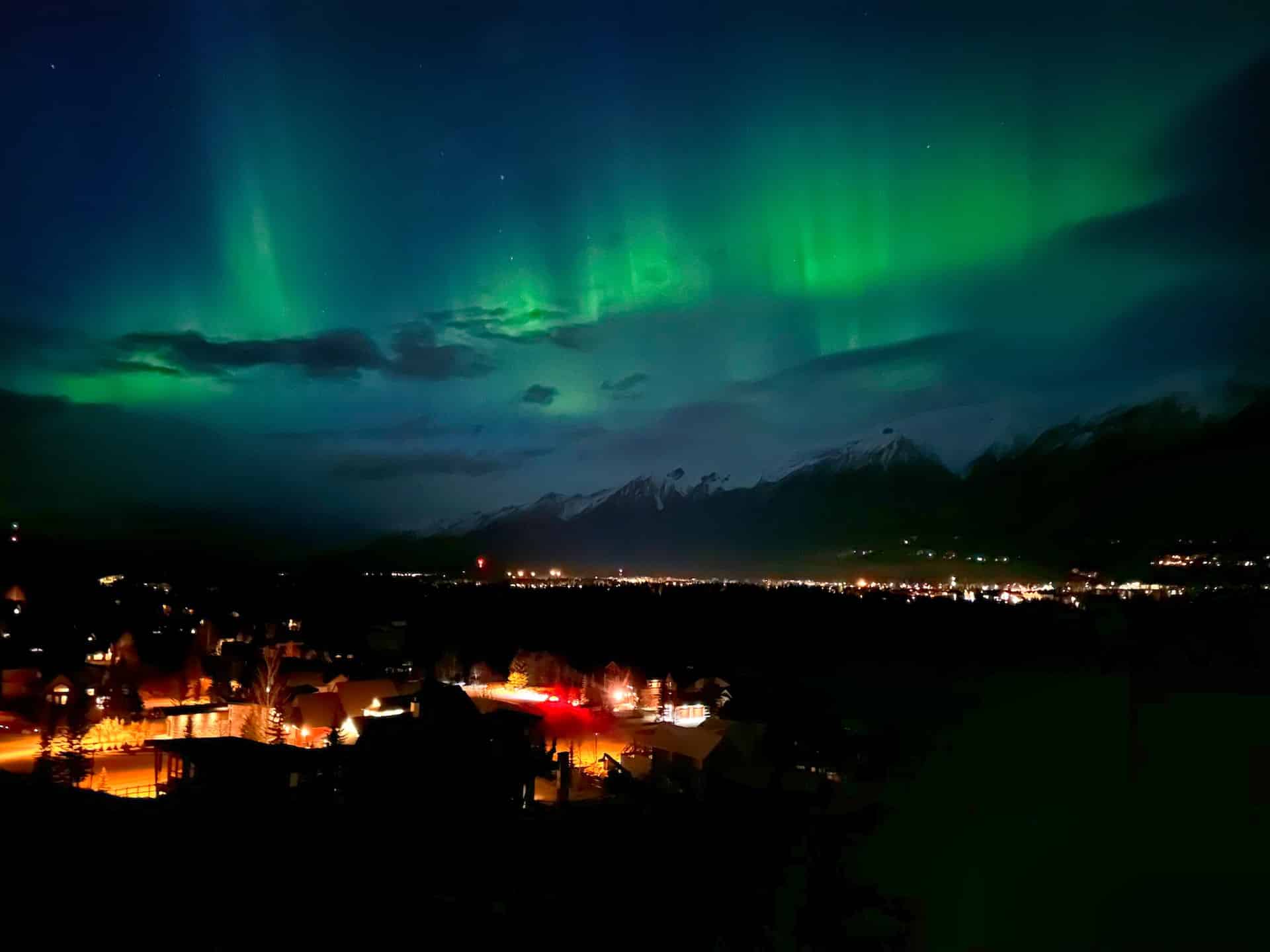
If you’re visiting in the summer mountains, I would not count on seeing them during your trip. While they can be seen in the very few dark hours we get in the summer it is unlikely and I would not plan a trip around it.
Word of warning, if they do appear in the summer months, it will likely be around 2:00 to 3:00 in the morning as nights are quite short. It may be helpful to learn more about when the best time to visit Banff is for you if your goal is to see the aurora.
Look at The Aurora Forecast
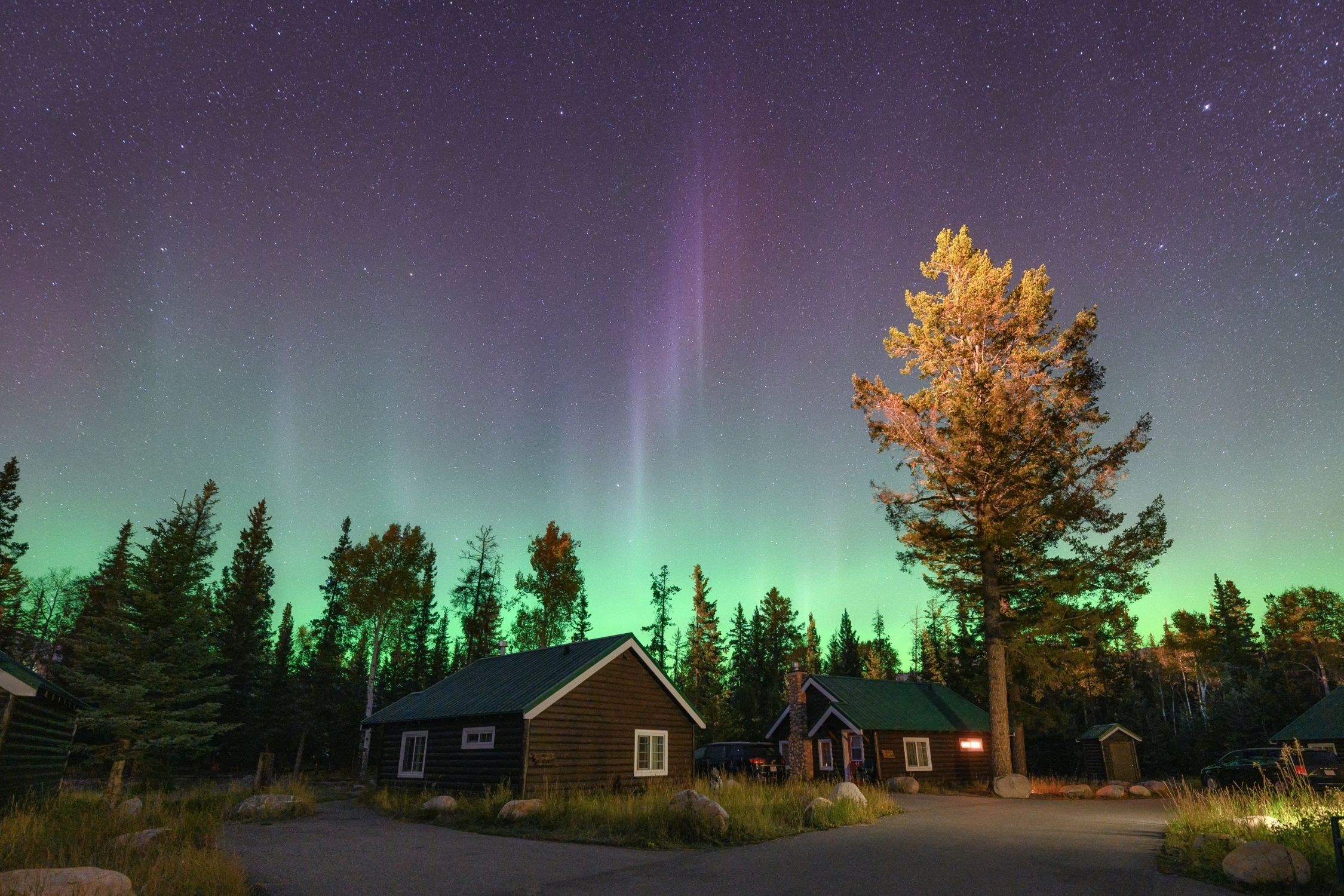
I would not advise out-of-province visitors to plan a trip around spotting the northern lights in Banff. The lights are too unpredictable in the Canadian Rockies, and the forecast is accurate only a few days, if not a few hours in advance.
However, it may be worth it for Albertan residents to set an aurora alert and occasionally watch the weather. Visitors and locals should keep an eye on the forecast if they have hopes to witness the lights. Luckily, several institutes put out a forecast for the northern lights.
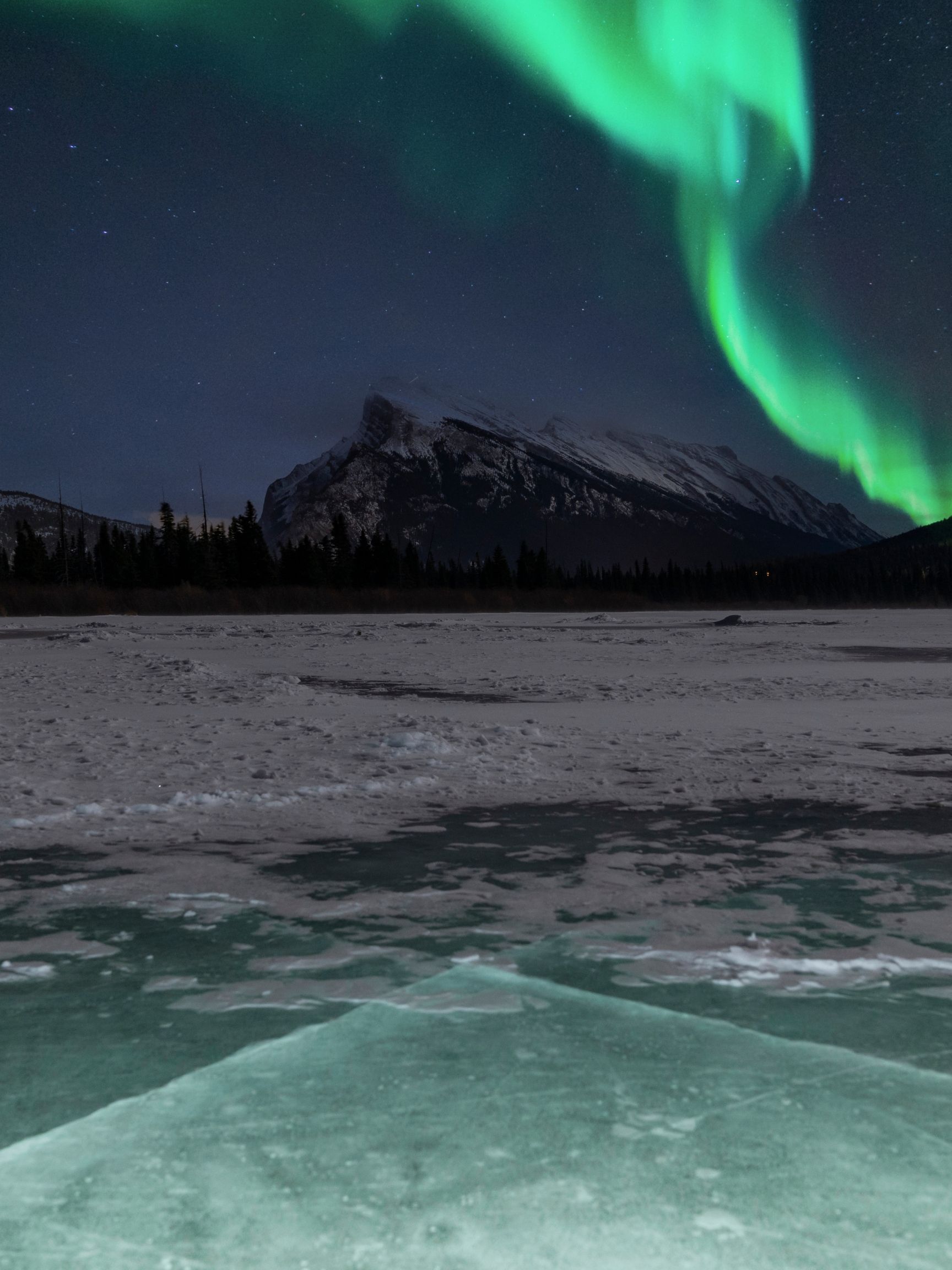
The University of Alberta manages an Aurora Watch that provides email alerts. Their updates are for the Edmonton region, but if they’re visible over Edmonton, they’ll likely appear in Jasper, Banff, and possibly even Calgary, too! Another useful site is the University of Alaska at Fairbanks, as they run the Geophysical Institute and provide an aurora forecast for North America.
Weather & Lunar Cycle
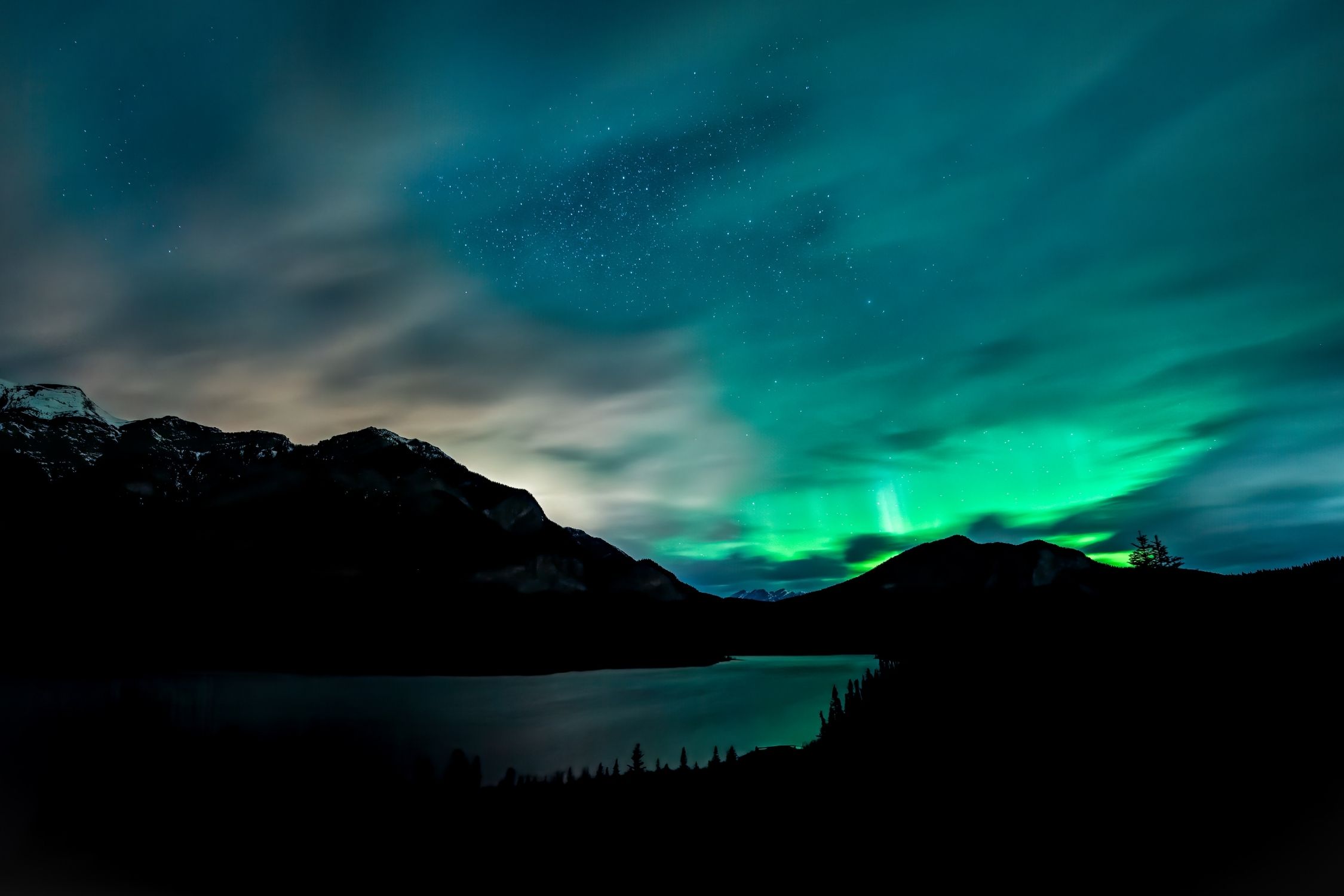
It should go without saying, but weather plays a large role in your ability to see the lights. Cloud coverage can greatly impact your ability to see the lights. A bit of flexibility and a long night can help your chance, as a drive up or down the Icefields Parkway can help you find a clear sky.
Clouds might be an easy consideration, but another important factor is the lunar cycle. The moon is the brightest object in the night sky and can really reduce your ability to see the stars and northern lights in Banff. The best chance is a moonless sky when the moon sets or rises late. Of course, a new moon is ideal, but getting that to line up with a cloudless night with the Northern Lights is pure luck. Keep an eye on the weather and lunar cycle before you venture out.
Where To See the Northern Lights in Banff
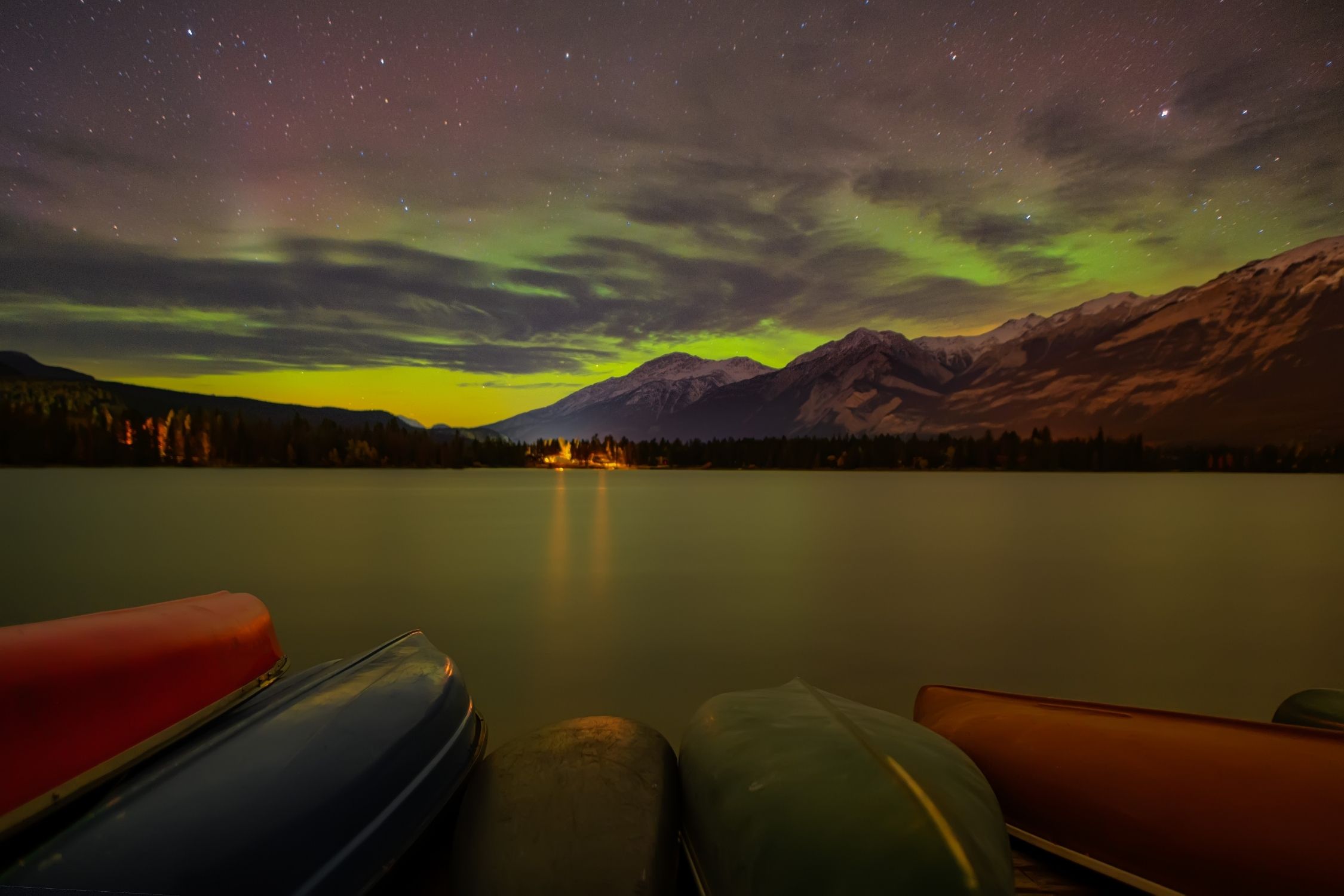
If you want to see the lights, you must avoid light pollution. Although, it is possible to see a faint glow above the town on very active nights. We have several recommendations for areas that are good to see the lights.
Lake Minnewanka
Lake Minnewanka is the best location to spot the lights near town as it is only a short drive. It’s about a ten-minute drive from the town center and offers an expansive night sky from the dam walls.
Vermilion Lakes
While they’re still pretty close to town, the third Vermilion Lake offers some great vistas with the least amount of light pollution.
Castle Junction
This junction is halfway between Banff and Lake Louise along the Bow Valley Parkway and offers some nice vantage points along the Bow River with Castle Mountain in the foreground. You can also get to Castle Junction easily right off the Trans Canada.
Peyto Lake
The Peyto Lake overlook offers an exceptional vantage point to see the night sky. It also happens to be one of our favorite photo locations that can be easily accessed.
Along the Icefields Parkway
The Icefields Parkway is far from any sort of light pollution and offers plenty of photography locations. Just be prepared for a long night as it’s far from town and the lights often make late-night appearances. Some of the best areas for viewing along the parkway are Waterfowl Lakes or Bow Lake.
Jasper
Naturally, Jasper is an exceptional place to photograph the night, thanks to its designation as a dark sky preserve.
How To Photograph the Aurora
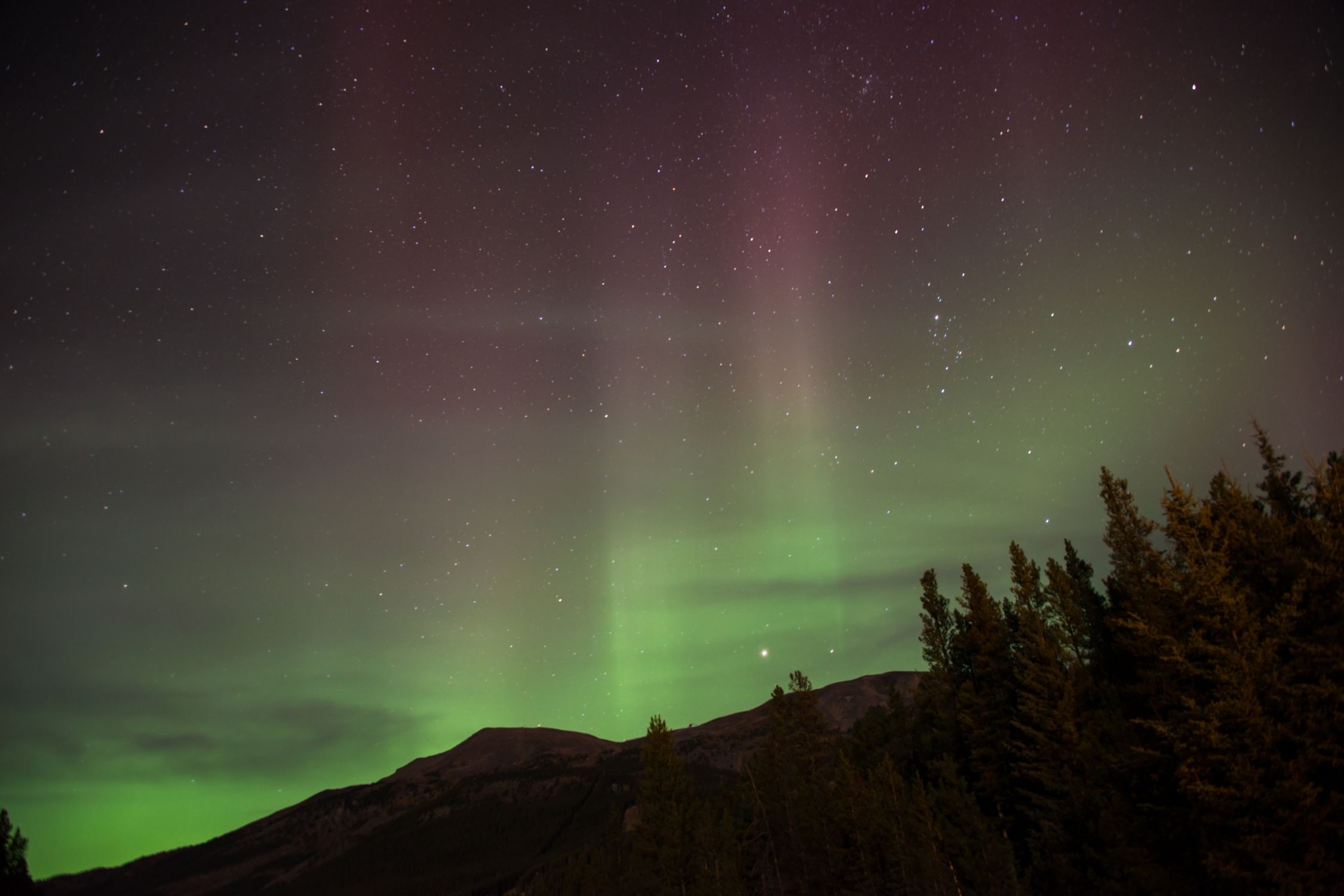
If you see the lights, it’s only natural that you’ll want to take a few photos. If you plan to photograph the northern lights or do any night photography, you’ll need a tripod and a camera allowing manual controls.
A typical Northern Lights shot takes around 30 seconds and requires the camera to be stationary. Before your trip, head out on your own to a quiet and light-free place and practice some nighttime photography to learn the basics. It’s best to play around and learn all about different ISO settings, aperture, and shutter speeds.
Tips to Catch the Northern Lights in Banff
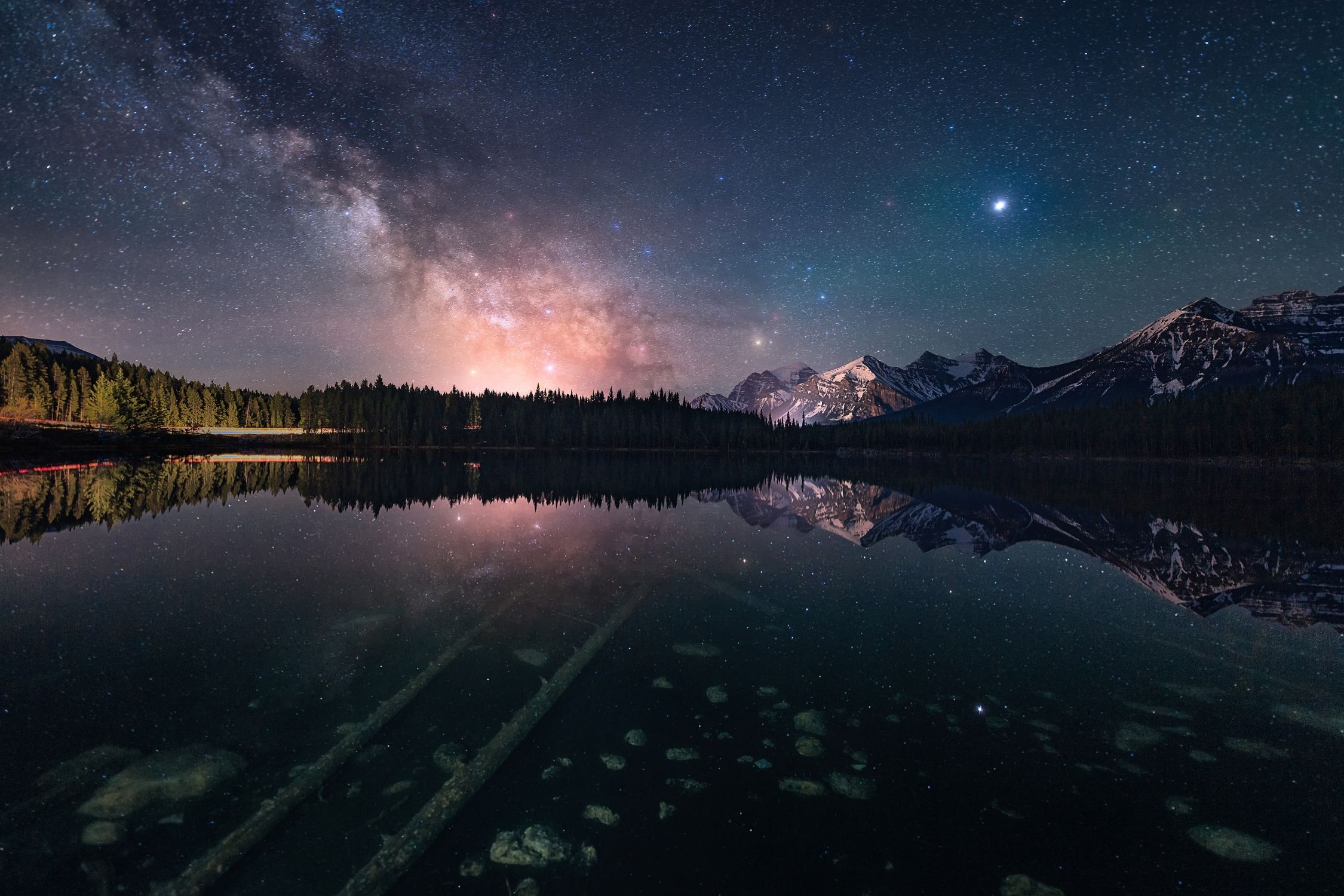
Learn the KP Index
Kp refers to a scale of numbers between 0 – 9 that is known as the planetary index. A 9 on a clear night in will be a full-blown show, though even a 3-4 will can be visible, as the scale refers to how far south the lights will be visible. Download an app to help you watch the Kp index.
Dress Warm
You’ll want some warm clothes to brave the nights in the Rockies, even in mid-August. We advise packing a bit more than just a ski jacket since you’ll be stationary and staring at the sky in the winter. Ski jackets are best for constant movement.
As a great cold-weather outfit, we suggest you wear thermal underwear, wool socks, a sweater, down jacket or parka, windproof pants (ski pants), a scarf, and a toque.
A Thermos Is Key
No one will ever complain about bringing along a hot drink while staring at the sky in the cold. I love bringing decaf tea in a thermos, but hot chocolate is a classic! Our favorite brand for keeping our drinks warm is Stanley.
Plan to Lose Some Sleep
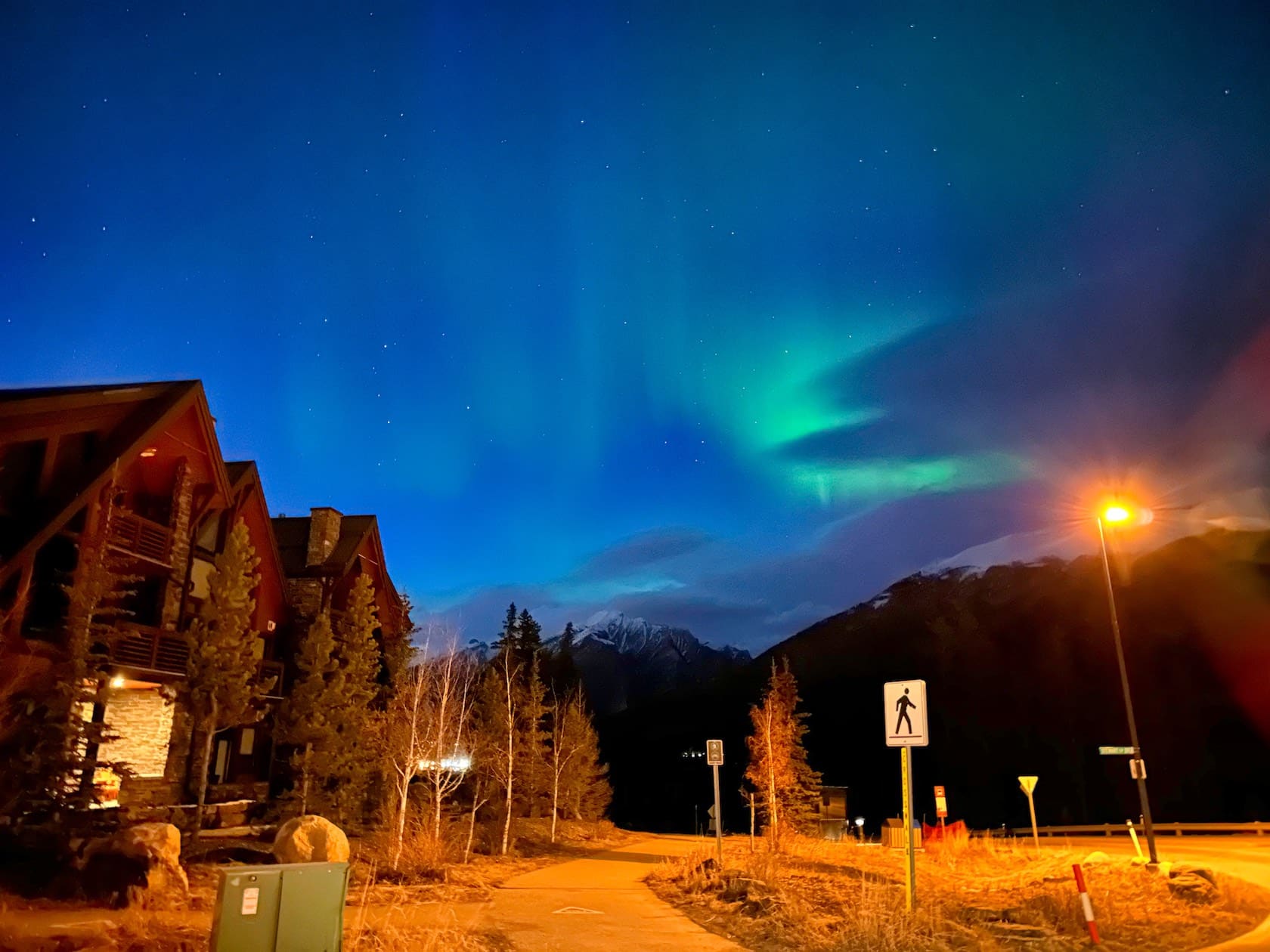
The northern lights aren’t on a convenient schedule where you can expect to see them every night at 9:00 p.m. Some nights, they’ll make an appearance in the early morning hours, while others, they may appear just after nightfall.
You won’t need to stay up all night, but if you are hard-set on trying to see the northern lights in Banff, you should be prepared to be woken after falling asleep in the middle of the night or staying up and not hitting the sack until 2-3 a.m.
**Author’s note: The cover image of this post is heavily edited. It’s doubtful you’ll see the northern lights over the town of Banff and Cascade Mountain due to the light pollution generated by the town.
Hop on a tour! There is no specific Banff tour that centers around seeing the northern lights, but there is a fantastic stargazing tour offered throughout the year!
Our Favorite Banff Hotels
Hopefully, this helped you determine how to see the northern lights in Banff! If you have any other questions leave a comment or see our Canadian Rockies travel guide for more articles about photography spots, lakes, hikes, and everything else.
Plan Your Trip to the Canadian Rockies
- Recommended Experiences: There are many things to do in the Rockies, but our top recommendations include the Banff Gondola and a cruise on Maligne Lake to Spirit Island in Jasper. If you want a stress-free way to get to Moraine Lake, we highly recommend looking into Moraine Lake Bus Company.
- Hotels in the Rockies: There are many places to stay, from luxury hotels to wilderness cabins. See all our favorites here.
- Get to Banff or Canmore Without a Car: The Banff Airporter provides fantastic service connecting you from the Calgary International Airport (YYC) to Banff or Canmore.
- Get Around: We suggest renting a car to get around. You can search for rental cars on Rentalcars.com. For a campervan trip, you can check prices and compare on Outdoorsy.
- Cheaper Airfare: We also use Going for airfare deals and travel credit cards to earn points on purchases. Those credit card points can be redeemed for free flights and hotels! Our favorite cards is the Capital One Venture X (which has an insane welcome bonus right now) as it has no foreign transaction fees.
- Hop On, Hop Off: This tour is taking Banff by storm. It’s exactly what it sounds like, hop on and off a bus to visit all the best attractions at your own pace!
↓ Ask Your Questions ↓
The Banff Blog Private Facebook Group is your headquarters for Canadian Rockies travel advice and information, including hike and off-season travel information. You can also meet new adventure buddies.

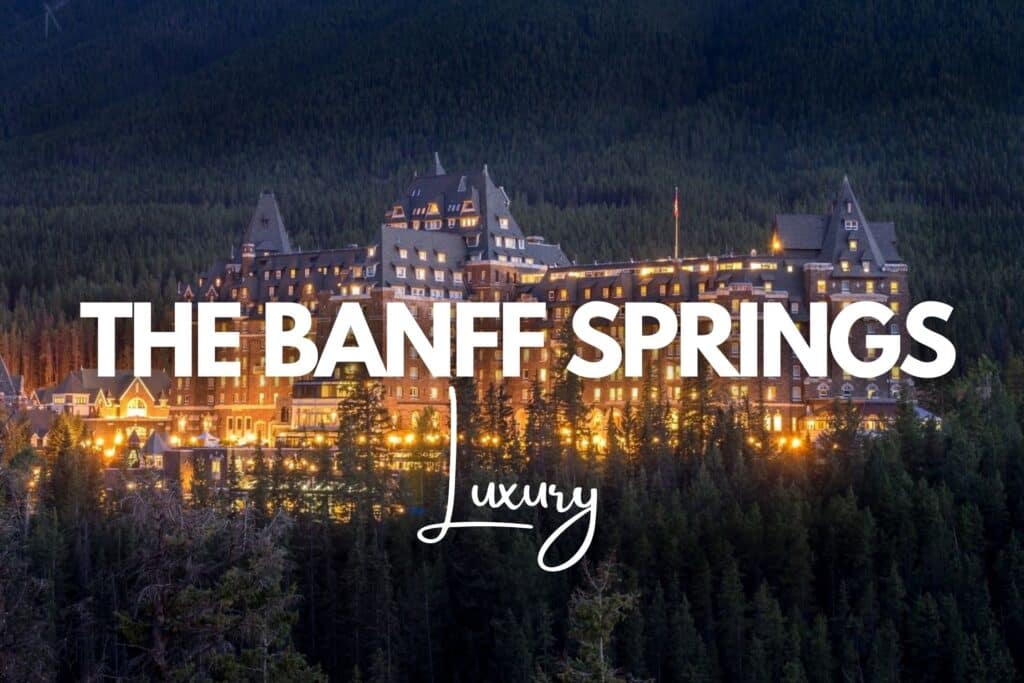
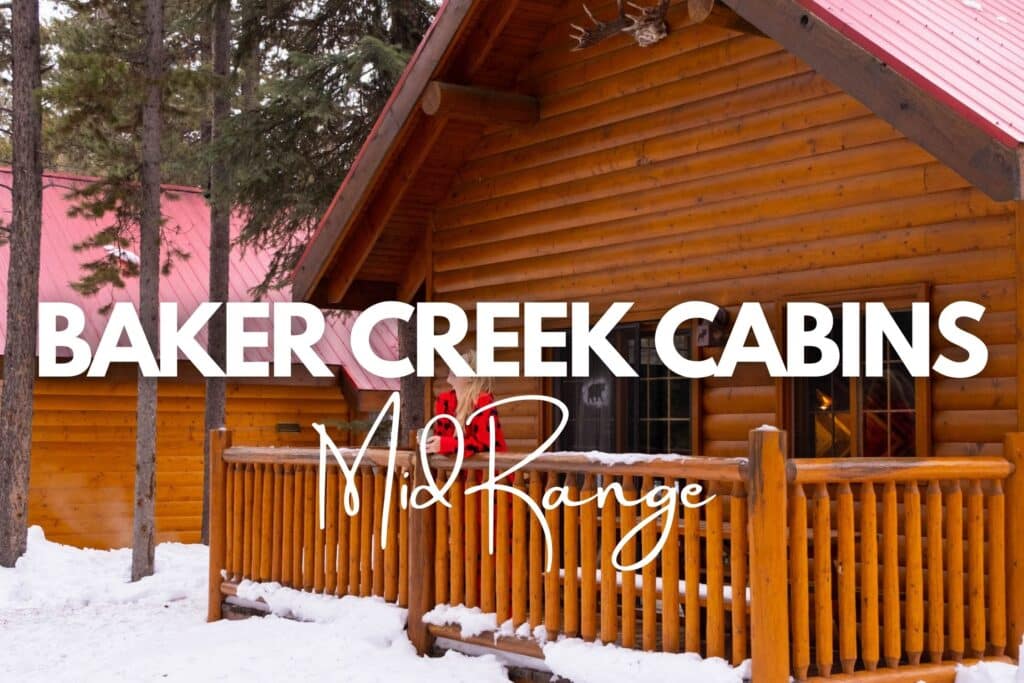
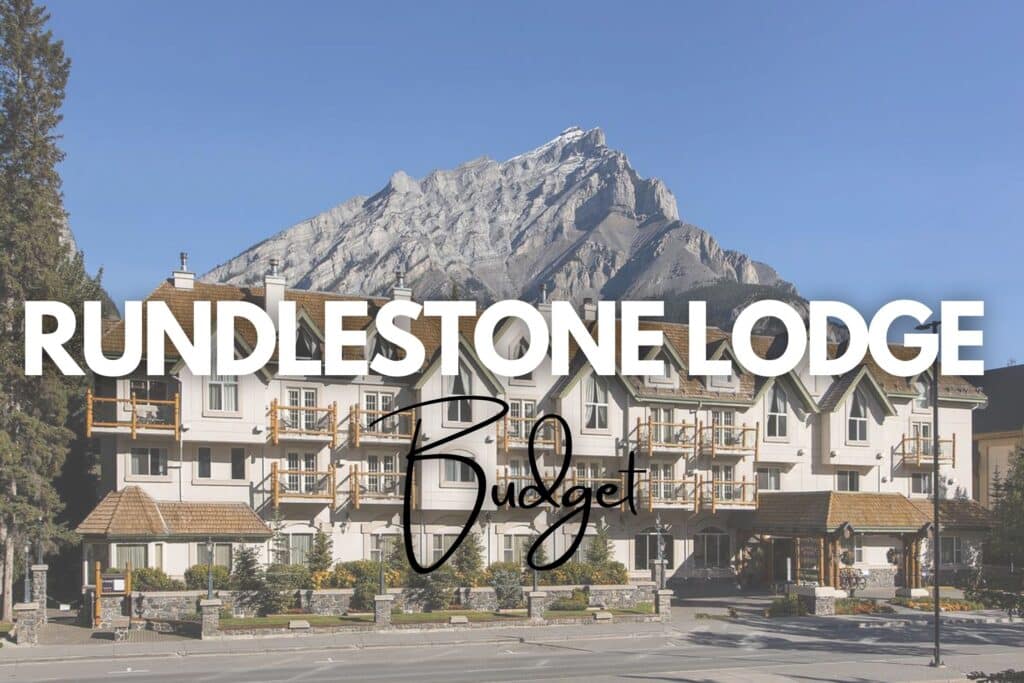
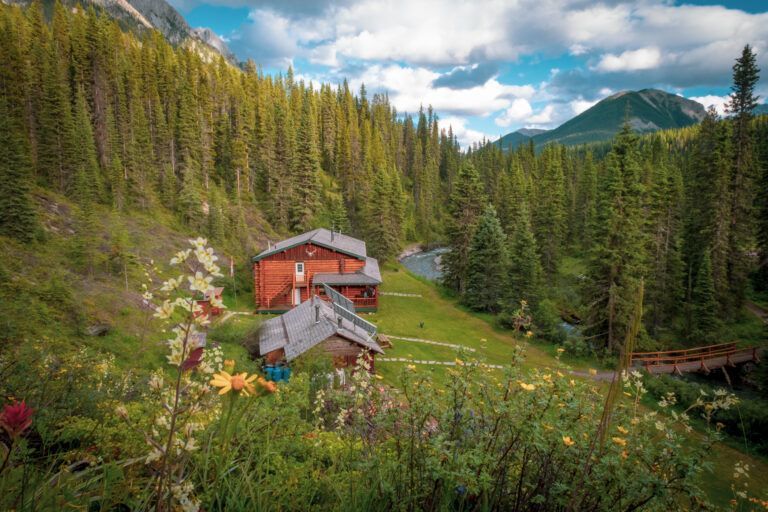
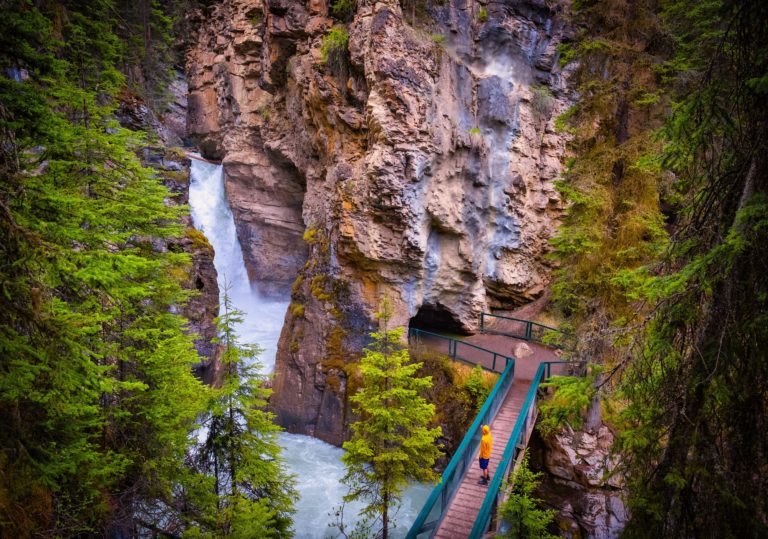
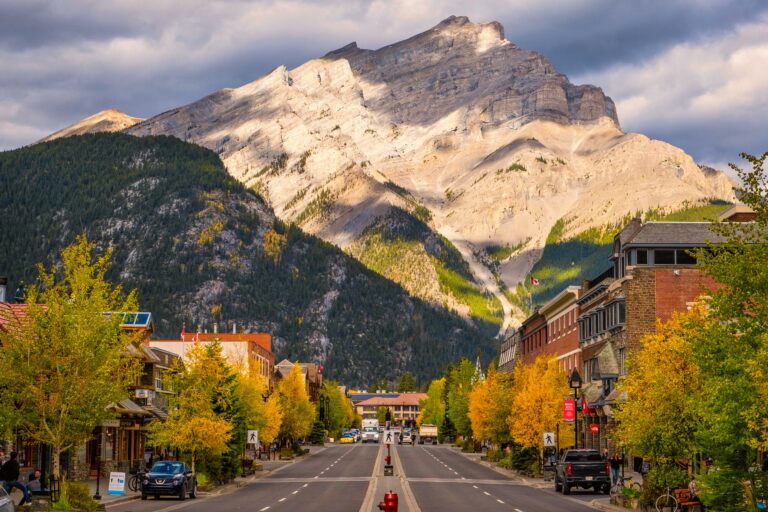
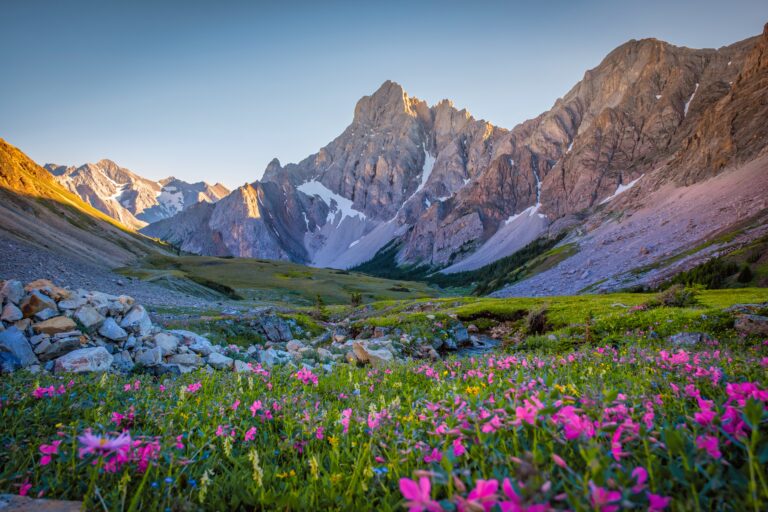
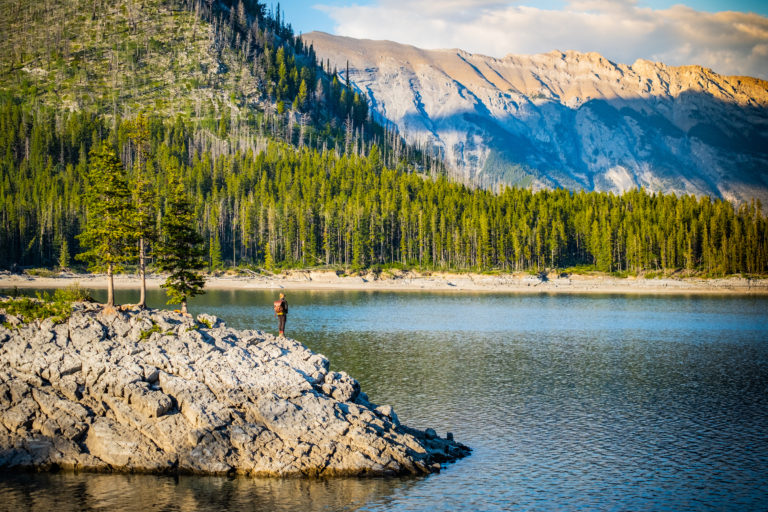
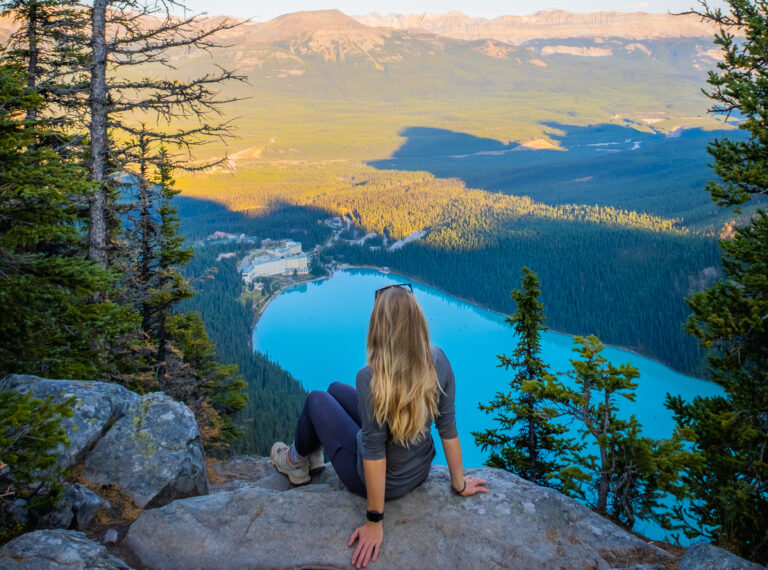
I returned today from a fur day trip to Banff national park. I would like to plan future trips. When is the best time to see water flowing down the mountains with the ice melting.
Well, that’s any day in the summer! However, the peak would be starting in mid-June to early July. In June, we biked one day to Moraine Lake and spent an hour watching hundreds of avalanches come off of Mount Temple.
What are your recommendations on sightseeings and tours in early November? thank you
You can see all our recommendations here! https://thebanffblog.com/banff-in-november/
We’re so happy to have found this beautiful and informative site. We’re planning a trip to see the Northern Lights in January-February 2024. You said explicity that one should NOT plan a trip to Banff to see the Aurora, so we will continue to search options. However, you’ve made Alberta and Banff very inviting, with lights or not. Thank you!
Hey Mary, thanks so much for the kind words. We definitely stand behind that statement. However, you could always tack up a trip up to the Yukon where you will have excellent chance to see the Northern Lights. 🙂
Capturing the northern lights by camera is on my bucket list. Do you provide guide services to the places mentioned in this blog? If not, can you recommend someone?
We don’t offer this service unfortunately. I’m also not aware of any guiding service offering this as it’s not as common to see them here unlike other places like Iceland, Alaska, Norway, etc. With a rental car and following these tips you don’t need a guide though!
I have a timeshare and my friend of 58 yrs wants to see the Northrrn Lights unfortunately the closest the time share takes us us WorldMark Canmore-Banff. It has nothing in Norway etc.Could you recommend late February for a glimpse of the lights????? Do you recommend that hotel. We could go to the National park or Lake Louise in an attempt. Probably a week would be good could you recommend a date or us late February good as any?
Hey MaryEllen we can not recommend a time for the Northern Lights as they are unpredictable, especially in the winter here as days can often be cloudy. The Northern Lights happen a handful of times a year here, definitely not worth planning a trip over. However, there is no bad time to visit the Canadian Rockies and there is plenty of things to do during the day.
We’ve personally done Northern Lights trips to the Arctic Circle where they’re much more reliable and predictable — Norway, Alaska, and Iceland are all far better destinations for the lights.